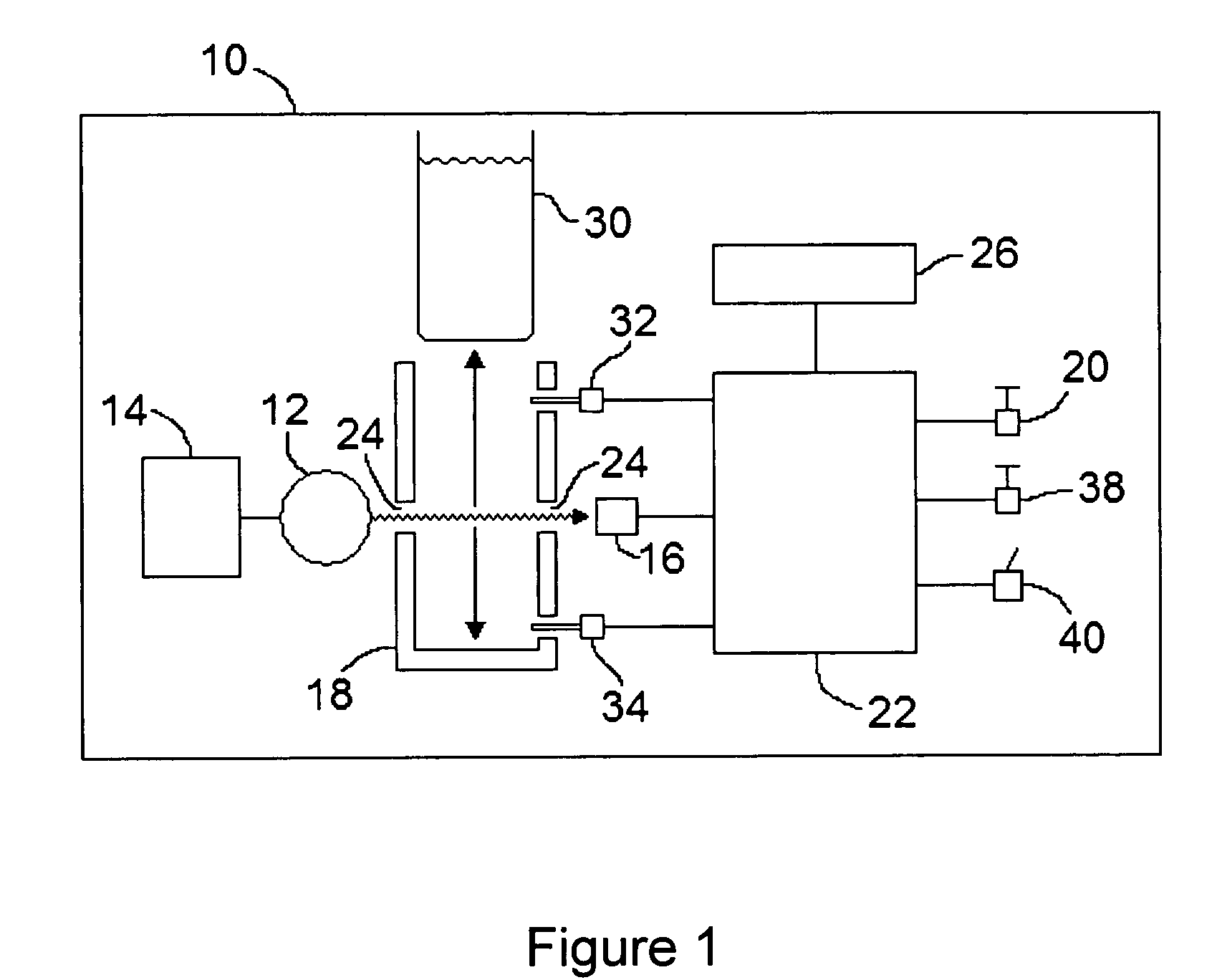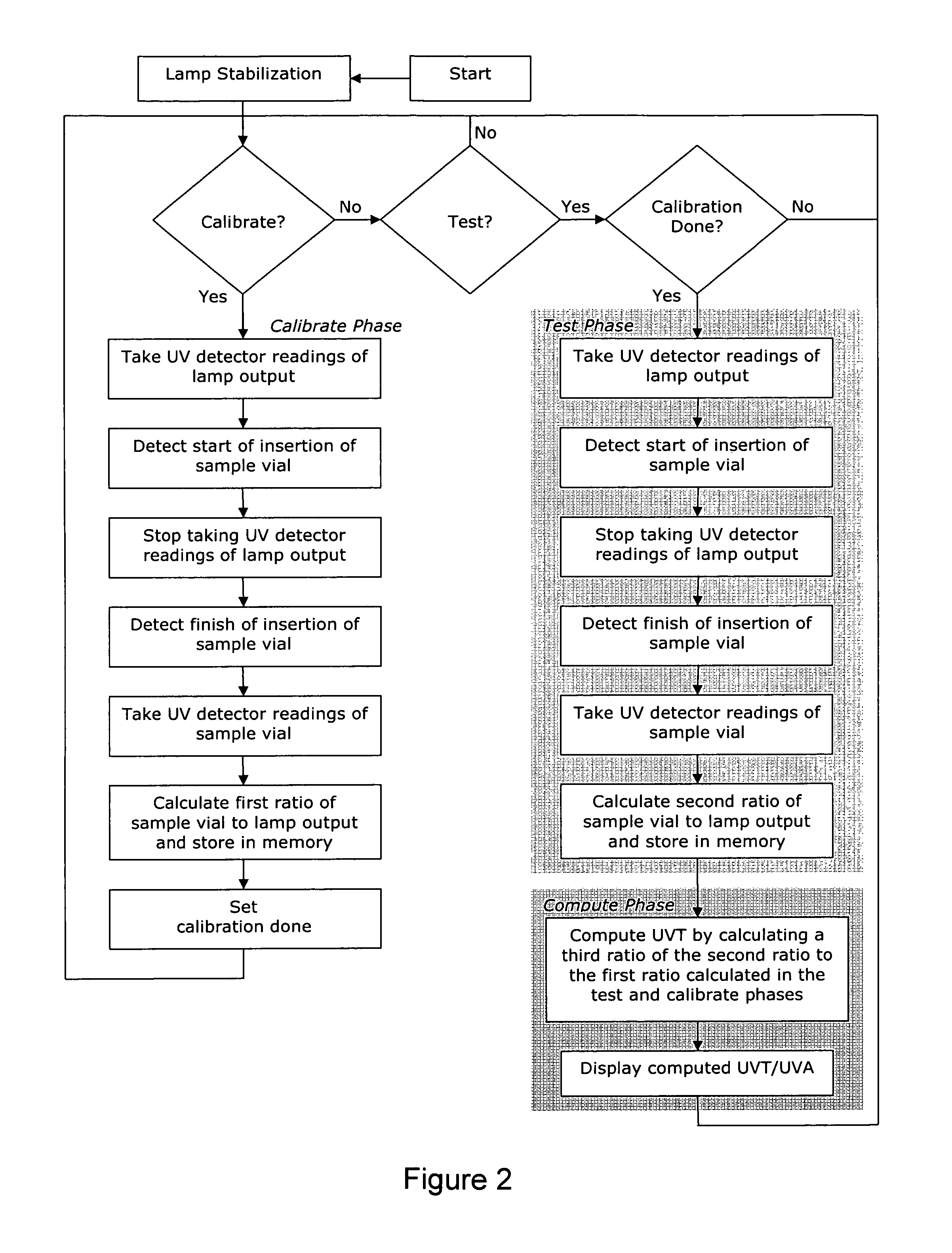UV transmittance measuring device
a transmittance measuring and uv technology, applied in the direction of calibration apparatus, optical radiation measurement, instruments, etc., can solve the problems of low cost design, low accuracy, and large errors, and achieve the effect of efficient and accurate measurement, computation and display
- Summary
- Abstract
- Description
- Claims
- Application Information
AI Technical Summary
Benefits of technology
Problems solved by technology
Method used
Image
Examples
Embodiment Construction
[0040]Referring to FIG. 1, a UV transmittance measuring device constructed in accordance with the present invention is shown generally at 10 and includes a single UV lamp 12 powered by a UV lamp ballast 14.
[0041]Lamp 12 can be any UV light source that emits light of a wavelength that can be absorbed by organic matter, generally between 250-290 nm range UV. Lamp 12 can be a mercury lamp, deuterium lamp or a deep UV LED light source. In a preferred embodiment, lamp 12 may be a mercury low pressure UV lamp emitting radiation with a wavelength of 254 nm as the UV source.
[0042]A sample vial holder 18 holds a sample vial 30 used to hold the liquid sample being tested. Sample vial holder 18 may be made of a material which is not degraded over time by exposure to UV light and for this reason a metal such as aluminum is preferred and if a metal is used apertures 24 are required on opposed faces of the sample vial holder 18 to provide a path for the UV light through the holder. Apertures 24 a...
PUM
| Property | Measurement | Unit |
|---|---|---|
| path length | aaaaa | aaaaa |
| wavelength | aaaaa | aaaaa |
| wavelength | aaaaa | aaaaa |
Abstract
Description
Claims
Application Information
 Login to View More
Login to View More - R&D
- Intellectual Property
- Life Sciences
- Materials
- Tech Scout
- Unparalleled Data Quality
- Higher Quality Content
- 60% Fewer Hallucinations
Browse by: Latest US Patents, China's latest patents, Technical Efficacy Thesaurus, Application Domain, Technology Topic, Popular Technical Reports.
© 2025 PatSnap. All rights reserved.Legal|Privacy policy|Modern Slavery Act Transparency Statement|Sitemap|About US| Contact US: help@patsnap.com



